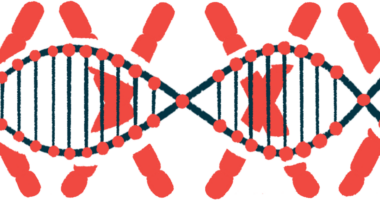Genetic Testing Clues In on EDS Type for 3 Patients in China

A genetic testing technique called whole-exome sequencing (WES) revealed potentially disease-causing mutations in three people with Ehlers-Danlos syndrome (EDS) — and provided evidence for the patients’ disease type — in a recent study.
An accurate diagnosis of a patient’s EDS type is important for appropriate disease monitoring and management, the Chinese research team noted.
“The findings in our study highlighted the capability of WES in achieving a definite diagnosis to various subtypes of EDS with overlapping symptoms,” the team wrote.
The study, “Whole-exome sequencing facilitates the differential diagnosis of Ehlers-Danlos syndrome (EDS),” was published in the journal Molecular Genetics and Genomic Medicine.
EDS is a group of genetic disorders in which the connective tissue that provides structure to joints, skin, and other tissues is affected, leading to joints that are overly mobile and soft, fragile skin.
While each EDS type has distinct characteristics, symptom overlap between them is common. Since some forms of EDS are associated with serious and potentially life-threatening consequences, it is important to accurately distinguish them, according to the researchers.
To date, mutations in 20 different genes have been associated with EDS. Several of these genes, including COL1A1, COL5A1, and COL3A1 are responsible for making types of collagen — a protein important for providing cellular structure.
Some genes are linked to specific EDS subtypes, meaning that genetic testing and analysis can be used to differentiate them, the scientists suggested.
To support this concept, they performed WES — a form of genetic testing — in three patients from the Shenzhen People’s Hospital, in China, who had typical EDS symptoms. The team then used the information to narrow down each individual’s EDS subtype.
The first patient, a 30-year-old male, had fragile skin and scarring, with overly mobile joints and excessively stretchy skin. He was suspected to have classic EDS (cEDS), the most prevalent EDS subtype. WES revealed that the patient had a newly discovered mutation in the COL5A1 gene that was likely disease-causing. Mutations in COL5A1 and the related COL5A2 account for more than 90% of cEDS cases, supporting that diagnosis in this patient.
Another patient, a 24-year-old woman, came to the hospital with dizziness and high blood pressure. Clinical and laboratory tests showed she had a number of other symptoms affecting her kidneys, liver, lungs, and gastrointestinal tract.
The woman also had foot abnormalities, and thin and translucent skin, with visible veins across her limbs, chest, and abdomen. Two months later, her condition worsened, and the patient died as a result of intestinal bleeding.
While some of her symptoms were atypical, they were altogether consistent with vascular EDS (vEDS), the most severe EDS type. Genetic screening revealed a COL3A1 mutation — a gene often associated with vEDS.
The third patient was a female, age 33, who arrived at the clinic with scarring and highly mobile joints. However, her skin was not as stretchy as is typically observed in cEDS. She also had translucent skin, a feature of vEDS.
This patient had a newly identified mutation in COL1A1, which often causes arthrochalasia EDS (aEDS), but has been associated with a few cEDS or vEDS cases. aEDS is usually accompanied by frequent hip dislocation, which this woman did not have.
The EDS subtype in this woman could not be determined, but the researchers noted she should be monitored for the progression of vascular problems and the possibility of a cEDS/vEDS overlapping subtype.
All three of these EDS cases were de novo, meaning the mutation was spontaneous, and was not inherited from either of each patient’s parents.
The mechanisms of how these specific mutations might lead to disease are not yet known, the researchers noted.
“The findings in this study expanded the mutation spectrum of EDS, provided solid evidence for the counseling to the affected families, and might shed light on the pathogenesis [development] of various [connective tissue diseases],” the scientists wrote.







